Analysis
Ethiopia’s Art Scene Has Long Suffered From a Disinterested Government. But Shifting Politics Might Soon Make Culture a Priority
Ethiopia's art community is cautiously optimistic about its new government.
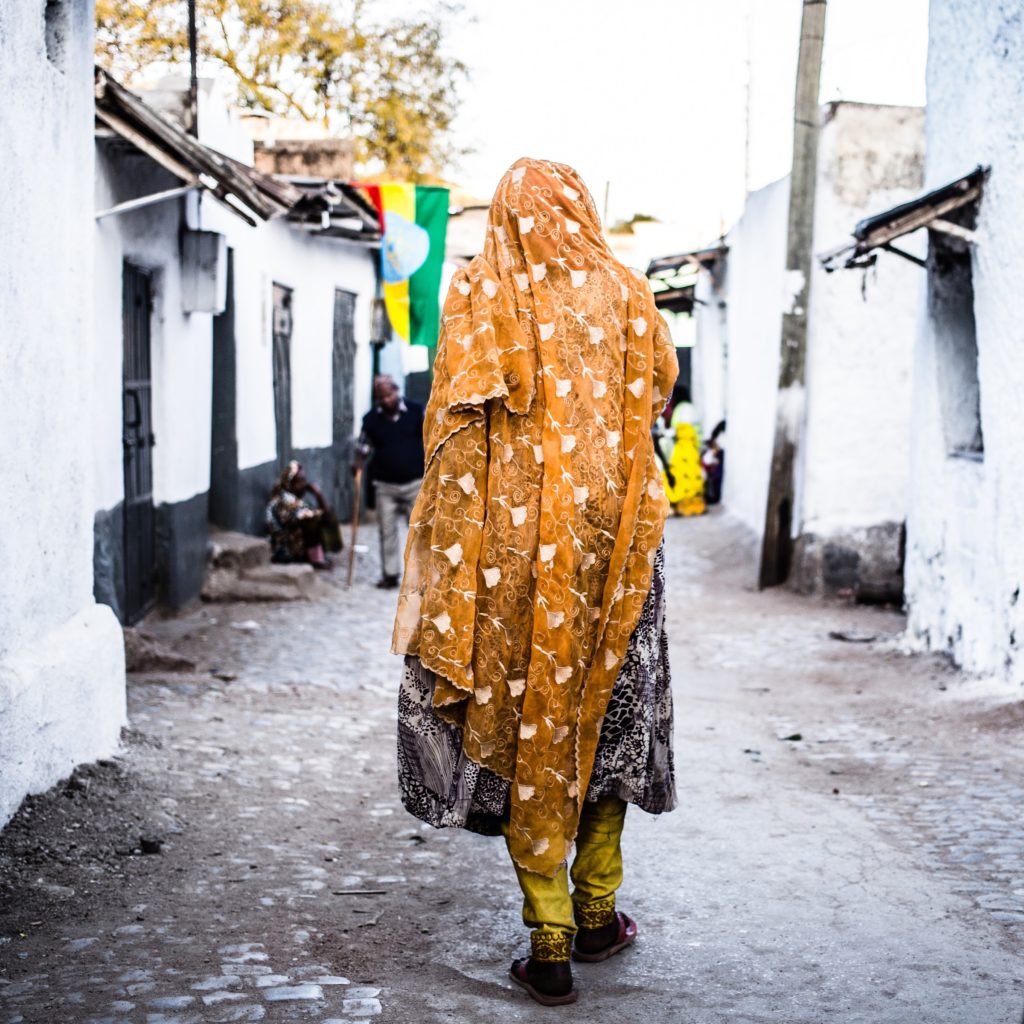
Ethiopia's art community is cautiously optimistic about its new government.

Rebecca Anne Proctor

On the third day of Ethiopia’s internet blackout on June 24, a group of artists gather together at Addis Fine Art in Addis Ababa. All phone data and wifi has been suspended following a foiled coup by rogue state militia the day before. The violence has left three top officials dead, including Major General Gezai Abera, who was killed by his bodyguard at home. “This has been a big shock to take a step back like this, as we are on the verge of positive change,” the gallery’s co-founder, Mesai Haileleul, tells artnet News.
Addis Ababa’s streets are empty and citizens have been advised not to journey outside of the city center. Still, three of Ethiopia’s most promising young artists—Dawit Abebe, Tizta Berhanu, and photographer Eyerusalem Jiregna—come to the gallery to speak with this reporter about their work. While the last few years have signaled much promise for Ethiopia’s growing art scene, after the attacks, the future seems uncertain again.
The recent violence illustrates how ethnic tensions are threatening the reform agenda of Prime Minister Abiy Ahmed. Elected just over a year ago, his plan to transform the country offered hope for democratic change to an eager Ethiopian populace—but his rapid changes have fostered uncertainty and tension at home.
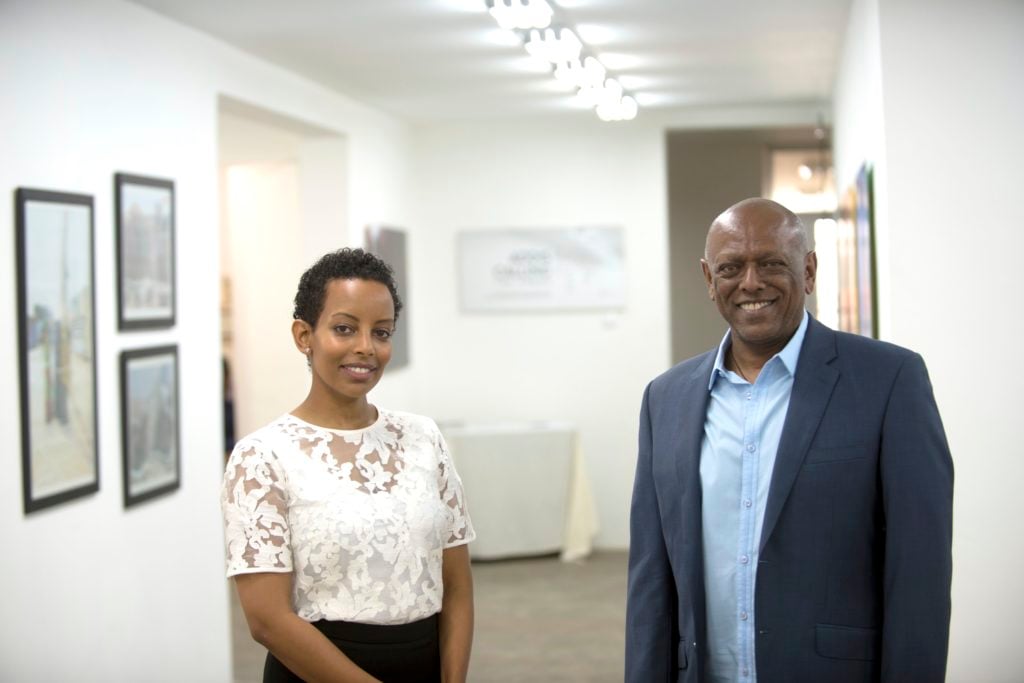
Addis Fine Art Founders Mesai Haileleul and Rakeb Sile. Courtesy of Addis Fine Art.
Amid Abiy’s wide-ranging reforms is a renewed interest in art and culture and a general desire to bolster Ethiopia’s image at home and abroad. But it will be an uphill battle: artists still face structural issues with respect to access of materials, a punitive taxation system, lack of government support. In the interim, dedicated individuals have stepped up to push the scene forward.
After launching the most ambitious reforms in Ethiopia’s history, Ahmed’s government is under threat. At the same time, economic change is on the horizon for Africa’s second largest nation and second fastest growing economy, according to the International Monetary Fund. The country leads Africa in second place after Libya with an 8.5 percent growth projection this fiscal year.
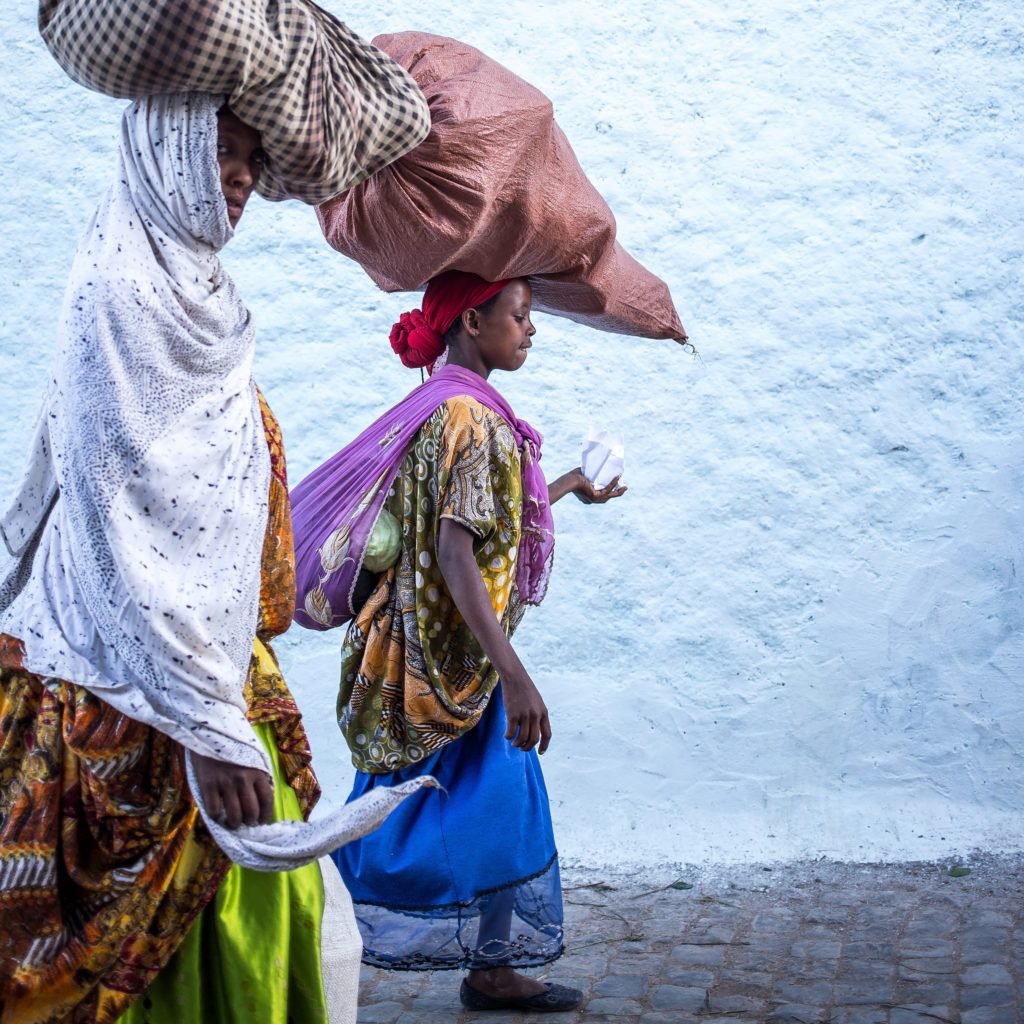
Eyerusalem Jirenga, The City of Saints X (2017). Courtesy of the artist and Addis Fine Art.
Ethiopia is an example of Africa’s unwavering march into the future. In October 2018, the country’s first female president, Sahle-Work Zewde, was elected by members of the Federal Parliamentary Assembly. The country has a growing entrepreneurial middle class and is host to a number of development projects, including an 80,000-seat mega-stadium built by Chinese developers and a historic new rail line to its Djibouti neighbor. Yet Ethiopia continues to struggle with ethnic divisions, a feature of national politics since 1995, when the current constitution came into force and carved the country into nine ethnically based semi-autonomous regions.
While the attacks are a reminder of the fragility of democratic revolution, Ethiopia’s desire for change couldn’t be better expressed than through its art initiatives. There’s the biannual Addis Foto Fest, founded in 2010 by photographer Aida Muluneh, the first and only international photography festival in East Africa; the new Zoma Museum, which opened in April this year; Addis Fine Art, which established its main space in Addis Ababa in January 2016 followed by a project space in London in October 2016; as well as a host of smaller galleries and artist-run collectives.
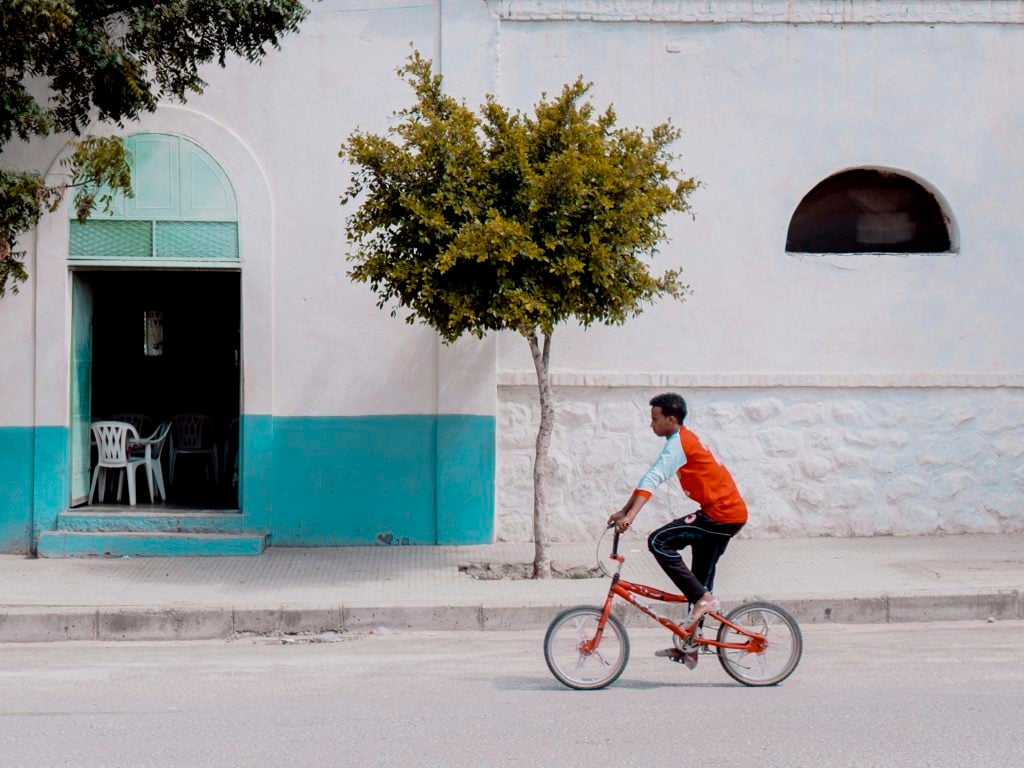
Girma Berta, Asmara XVI (2018). Courtesy of the artist and Addis Fine Art.
The new government has also made life easier for artists. “During the last government we needed to have a permit to take photographs in the street,” says Jiregna, the photographer. “The government didn’t want us to capture images that might show a sensitive side to the country. It used to be that you could be arrested for taking a picture! It’s improved since Abiy’s new government. We can now take our pictures freely.”
And the prime minster has taken an interest in the country’s growing art scene. In early June 2019, he visited Addis Ababa’s Alle School of Fine Arts & Design at Addis Ababa University, becoming the first head of state to do so in 46 years. “It’s really encouraging to see the prime minister taking an active interest in visual arts,” says Rakeb Sile, the other co-founder of Addis Fine Art, the country’s first international platform for Ethiopian art. “For the first time in a long time, we have someone who understands the importance of art.” Also notable, he says, is the fact that the prime minster has works by contemporary Ethiopian photographers Girma Berta and Eyerusalem Jiregna in his offices.
Any visitor to the premises of the school will be blown away by the monumental sculptures situated in its grassy outdoor area, akin to the forms of British sculptor Henry Moore. Ethiopia’s only art school founded by the late artist Alle Felegeselam, like its country, has witnessed many ups and downs. “Most artists leave Ethiopia after graduation and try and make it abroad,” Haileleul says. “When they aren’t making money from art, they have to make money from menial jobs and the art creation stops.”
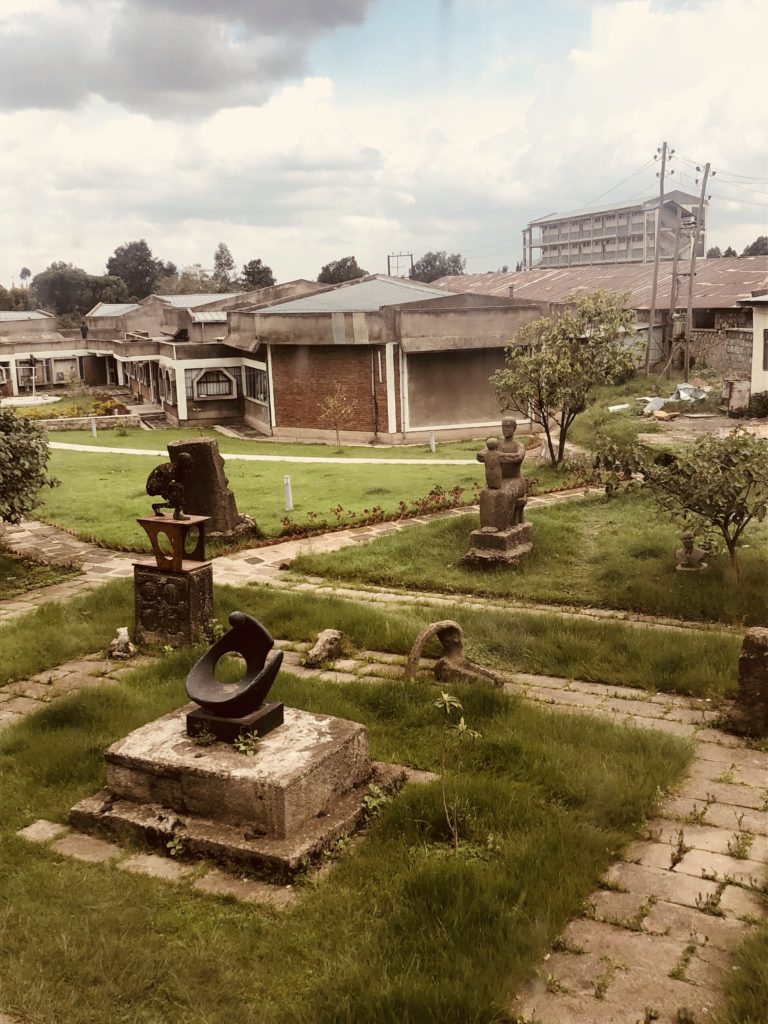
The campus of Alle School of Fine Arts and Design at Addis Ababa University. Photo: Rebecca Anne Proctor.
Why does it need to be so hard? Both Haileleul and Sile believe that with greater government involvement, the art scene at home will flourish—and, as the thinking goes for so many aspiring art hubs, this activity will benefit the economy by driving tourism and ultimately giving Ethiopia a better image. “In many ways we are still known as the ‘poor’ country that underwent the terrible famine in the ’80s,” Sile says. “Art empowers us to change that narrative as there is so much more to say about this ancient, complex, and creative nation.”
But so far, the infrastructure remains relatively slim and inhospitable to artists. As a result of an unforgiving tax system, Ethiopia still has few commercial galleries. Until a few years ago, the major one was Asni Gallery, run by Konjit Seyoum. Established in 1996, it was known for promoting the younger generation of Ethiopian artists. In 2018, however, the gallery closed, unable to keep up with the challenges of running an art space in a still very much emerging market.
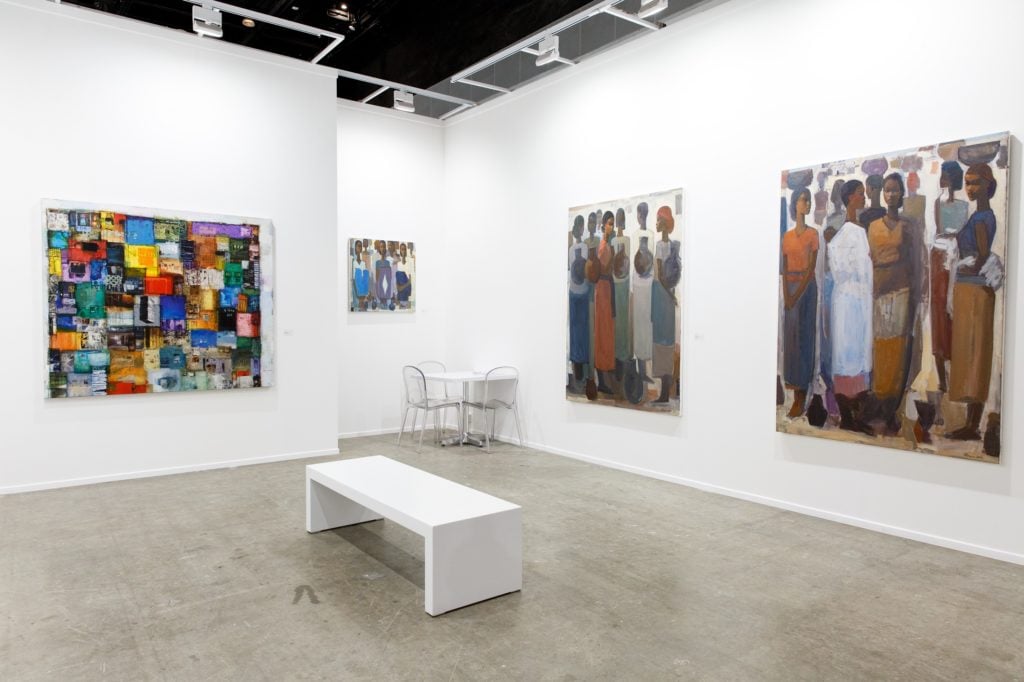
Works on view by Addis Gezehagn (left) and Tadesse Mesfin (right). Courtesy of Addis Fine Art.
In the absence of a vibrant gallery scene, artists have had to create community for themselves. For example, Dawit Abebe—whose paintings often depict imposing figures with their backs to the viewer and who is represented by London- and Berlin-based Kristin Hellejellerand Gallery—established the Habesha Art Studio, an artist collective, in 2001. He remains a full-time artist-in-residence there.
“It was really difficult to be an artist after graduating, so 10 of us gathered together to start an artist’s studio whereby we shared resources and invited friends and collectors to exhibitions,” he says. “Many younger artists have followed our lead.”
Some have also become their own salespeople. Artist Leikun Nahusenay lives, works, and makes sales out of his space in the basement of the Guramayne Art Center, where a vibrant mess of colorful installations, paintings, and found objects are strewn around various rooms. “I’ve been living here for 18 years and it is where I live, sleep, eat, create, teach and also sell my art,” he says.
In addition to the lack of opportunity for commercial representation and punishing import taxes on art materials, artists in Ethiopia face other structural obstacles that affect their earnings.
There is, for example, nowhere to print archival photographs in the country. “The only way to do it is through foreign investment, which is not yet allowed in the art sector. We would need this to import the material and set up an archival printing shop,” says Rakeb Sile. “However, anything art-related—paper, ink and even paint, is treated as a luxury item on import and it can be taxed at high arbitrary amounts—we have seen up to 500 percent.”
Crucially, Ethiopian tax law makes no distinction between artists, manufacturers, and retailers. As a result, galleries who work with artists who don’t have a company registered in their name that is recognized by the tax office—a costly and lengthy process—must withhold 30 percent of the artist’s share for the government. If artists are registered as a company, the gallery must withhold only two percent. Still, Haileleul says, “99 percent [of artists] don’t” register this way.
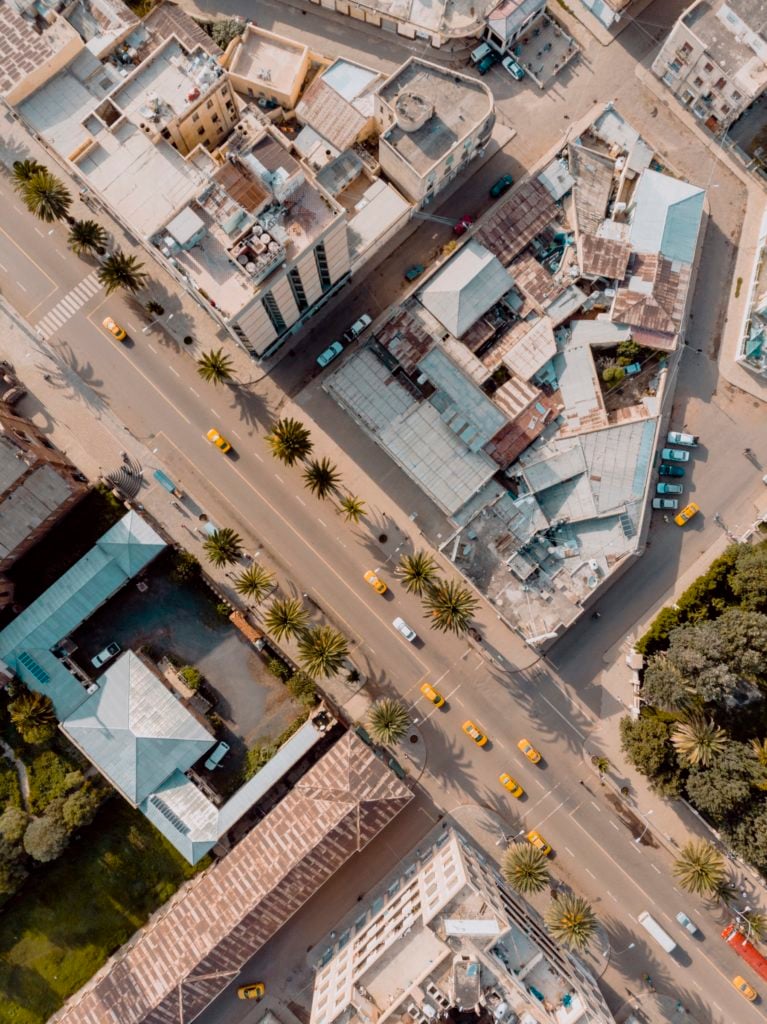
Girma Berta, Asmara IX, (2018). Courtesy of the artist and Addis Fine Art.
As a result of this onerous system, the majority of art sales within Ethiopia happen informally. “If there were reforms to the taxation issue then more galleries might open up and artists would engage in more formal ways,” Sile says. “It would strengthen the whole ecosystem.”
Another new initiative spearheaded by dedicated private individuals is Zoma, an eco-homage to Ethiopia’s indigenous architecture and a home for contemporary art from Ethiopia and abroad. The space, which hosts a residency and exhibition program, has been in the pipeline for 25 years.
“There’s been no government support for the project; we have invested entirely our own money,” says Meskerem Assegued, who founded Zoma alongside multidisciplinary artist Elias Sime. Perhaps this will change. The prime minister also recently paid Zoma a visit.
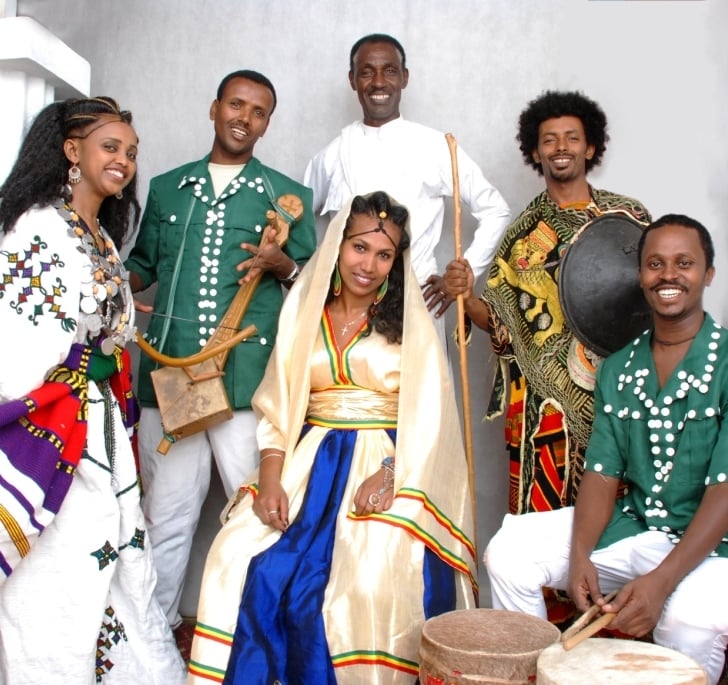
The musicians and dancers of Fendika, courtesy of Lotus Education & Arts Center.
“The culture protects us but we are not protecting our culture enough, and this makes me worry,” says Melaku Belay, a musician, performer and founder of Addis Ababa’s famous Fendika Cultural Center. “The government is starting to look at art now.” And while structural change awaits, Belay says, “at least they have made us free, and not made us use our art for propaganda.”
Looking ahead, the Ethiopian art community is determined to usher in a new era of growth. “You need art as much as you need food and water,” Assegued says. “Without the visual you are dead. Imagine the world without art. How long could you survive?”